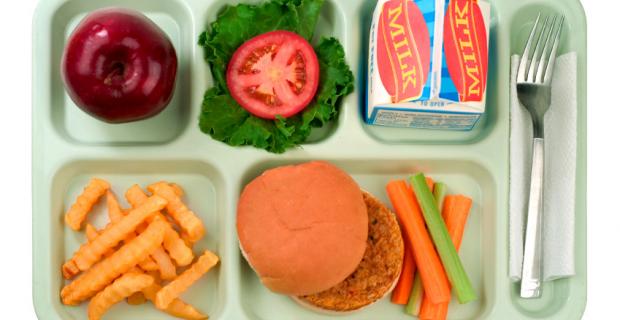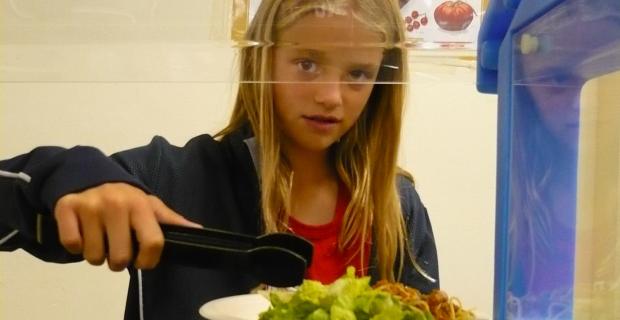Improving School Meals: Are We Penny-wise and Pounds Foolish?

When making major changes to improve school food, such as moving from a thaw-and-serve style of food service to cooking from scratch with fresh ingredients, we need to realize how much we're asking of food service personnel.
Every bit of change any of us makes in our lives — when we move, when we change jobs or relationships — is hard. Revamping school food services requires large changes from a whole group of people, many of whom have been doing their jobs for decades, and have received awards, accolades, and promotions for what they've done. Now we’re asking them to unlearn much of what they've learned about preparing school food. We're telling them that they need to acquire new skills, and sometimes to work harder.
Changing the food service will make more sense to workers if they can see themselves as part of a bigger cultural change around food in general, and school food in particular. Historically, the USDA National School Lunch Program has always been treated as a hunger-relief (and farm support) strategy aimed at undernourished kids. Its success has been measured in pounds of food and numbers of bodies served — never quality, just quantity. The measurements have been calibrated for “How cheap? How many? How much?” In the current crisis of escalating diet-related illness, we’re living with the consequences of maximizing the number of pounds of low-quality food going to increasingly large bodies.
Many food service employees, especially if they've been doing it for 20 or 30 years, got into school food service because it was a daytime job they could hold while their kids were in school. Over time, many stayed when they discovered that they had a real affinity for feeding kids. Still, most of them are aware of, and uncomfortable with, the fact that the food isn't very good, and the kids don’t really appreciate it.
A powerful factor in building enthusiasm for change is remembering that everybody wants to be appreciated for what they do. In many lunchrooms, the lunch ladies are placed in a no-win position. They know that the food isn't good, but they don’t have the tools to do anything about it. Being recognized as important players who are improving the school lunch program is tangible, and makes them feel valued and appreciated. When that is the end result, we usually have total buy-in.
I've seen tremendous positive changes in food service staff when we've improved the food served to students. In one district where I worked, the primary obstacle to change was resistance from the lunch lady in charge. At first, she wanted nothing to do with me and my bunch of young cooks, coming in with our own ideas about how to improve school meals. After we had worked together for about two months, the superintendent called me into his office. ”Guess what she served for dinner last night?" he asked. "Roasted vegetables. She brought the leftovers in for me to taste. She said the kids love the food so much, she thought she'd start cooking it at home.” Years later, that same lunch lady says that her life changed when the kids she cooked for really began to enjoy the food.
It’s also important for people to see the whole picture of what we’re trying to change. I don't think that every food service person has to visit a farm, but every one I've worked with so far has had that opportunity. If you can't get to farms, you should get everyone to a farmers' market. If you can't get to farms or a farmers' market, you need to invite farmers to come to school with an array of freshly harvested food.
If we hope to improve school meals, we’ve got to begin to measure success in a very different way. In order to do that, we need to begin to think in a very different way. We’ve got to stop counting pennies, pounds, and people. The issue is not about spending less — or even about spending more. We need a different worldview based on measuring the health of children and the health of the planet. That will lead us to the health of families, communities, farms, and the environment.
The Centers for Disease Control and Prevention recently predicted that 30 to 40 percent of all the kids born in the U.S. are going to have diabetes in their lifetimes. We need to ask, "What does that cost?" We currently spend $115 billion on diet-related illness every year, and that number can be expected to grow exponentially. Can we take some of that money and put it into preventative medicine? And can we begin to see healthy school meals and sustainable farming practices as preventative medicine? We need to measure success not by how little of this or how much of that, but by what is good in the long run for children and the planet. Whatever that costs in the near term, we all need to start figuring out how to fund it.




